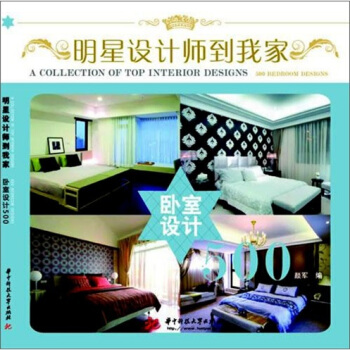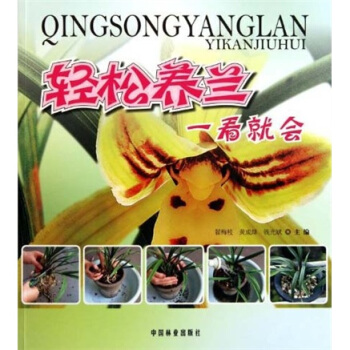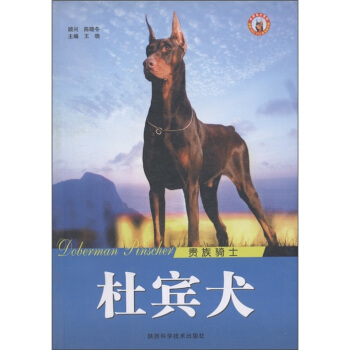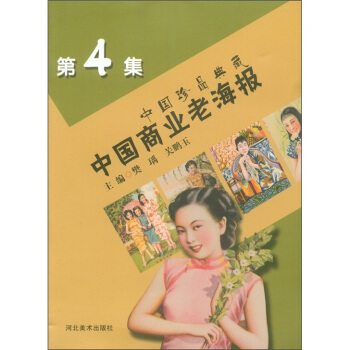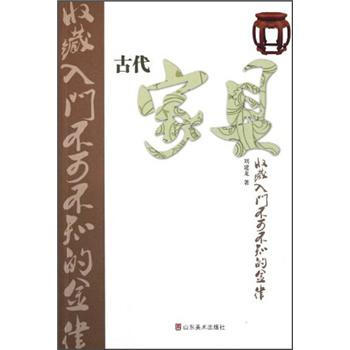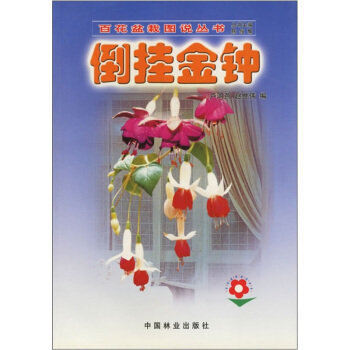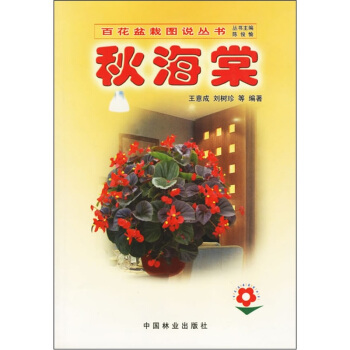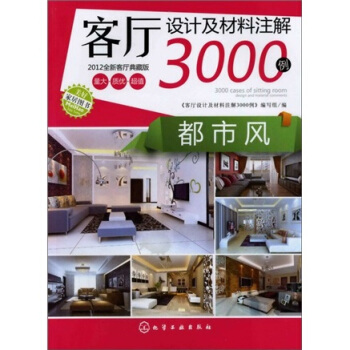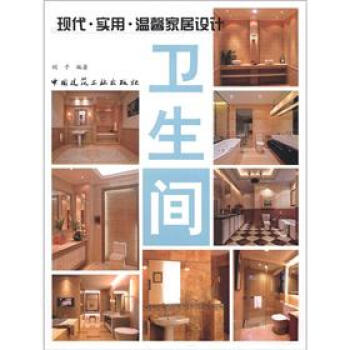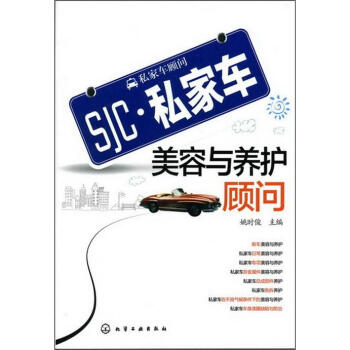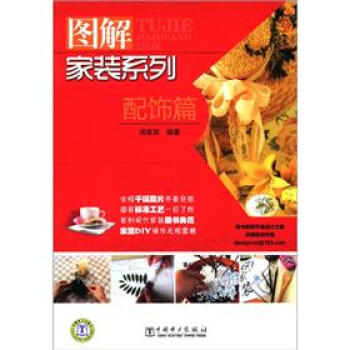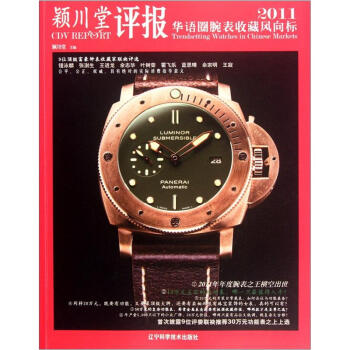![中国国宝系列:中国古代玉器(英文版) [Jades of Ancient China]](https://pic.windowsfront.com/10678852/58cd4233N3a1d4d59.jpg)

具体描述
编辑推荐
Among the numerous forms of the wonderful cultural heritage inthe Chinese history, jade carving is definitely a unique art style.It is not only the cultural evidence to the historical developmentof human beings, but also the elegant and valuable artwork.This book is to introduce jade monographs.
内容简介
本画册选取目前中国有代表性的古代玉器,用精美图片和通俗易懂的文字,从商周到明清以时代划分,系统介绍玉器在中国的发展演变及分布,且每件器物说明文字简洁生动,知识点丰富,可读性强,展示了中国玉器的悠久历史和独特魅力。
The “Chinese National Treasure” series introduce precious Chinese ancient cultural relics.
内页插图
目录
CONTENTS
Preface
Jades of the Neolithic Age
Jades of the Xia and Shang Dynasties
Jades of the Western Zhou Dynasty
Jades of the Spring and Autumn Period
Jades of the Warring States Period
Jades of the Qin, Han, Wei, Jin, Northern and Southern Dynasties
Jades of the Sui, Tang and Five Dynasties
Jades of the Song, Liao, Kin and Yuan Dynasties
Jades of the Ming Dynasty
Jades of the Qing Dynasty
A Record of Auction of Collections
A Brief Chronology of Chinese History
精彩书摘
JADES of the Ming Dynasty
The development of jade carvings in the Ming Dynasty (1368–1644) could be divided into three periods of early, middle and late stages. In the early stage, the jades still kept the style of the Yuan Dynasty; in the middle stage, formed a style which was quite similar with that of the Han Dynasty; in the late stage, became complicated and philistine on both of shapes and designs.
The types can be divided into various categories including ritual object served to the imperial court, jade vessel, animal shaped display, stationery, decoration and imitation of the ancient objects.
The jades of the Ming Dynasty are left in a large quantity thanks to three promotions made at that time: first, changed the social system to upgrade the treatments and social status of the jade craftsmen; second, renovated the jade carving tools to increase the production efficiency; third, set up cluster–based jadeware manufacture system due to the economic growth and the enlarged market demands.
The main motifs of this period are the commonly seen human figures, animals, plants and objects, always carved on the solid jade materials. The carving techniques get developed by combining the methods of painting, sculpture and gold–silver filigree with the traditional methods of concave lines, relief and round sculpture. The openwork skills reach the top level. The designs are mostly in those auspicious patterns including the flowers such as lotus, peony, Ganoderma Lucidum, pine, bamboo and plum; animals such as dragon, phoenix and deer; and also the human figures. Difference is that the designs of the early and middle stages are plumy and vivid while the designs of the late stage are too complicated and lack of vigor.
To sum up, the jades of the Ming Dynasty settle a solid base on all the aspects for the jades of the Qing Dynasty for its approaching to the top splendid achievements.
Deer, as a motif of jade carving, appeared at latest during the Shang and Zhou dynasties, and still plays an important role today on the art works.
This piece is carved in a natural style keeping all the parts in a good balance. The powerful carving lines show the good skill succeeding from Song and Yuan dynasties while the poor polishing represents the bold style of the Ming Dynasty. Since the Chinese characters of "deer" and "ample salary" are in the same pronunciation; also deer and Ganoderma Lucidum are the important parts of the auspicious designs of the Ming Dynasty, people always regard them as the auspicious symbols.
This piece is not only a displayed decoration for appreciating, but also a paperweight for actual usage.
前言/序言
Preface
Among the numerous forms of the wonderful cultural heritage in the Chinese history, jade carving is definitely a unique art style. It is not only the cultural evidence to the historical development of human beings, but also the elegant and valuable artwork. During the very long times from past dynasties up to now, it's always one of the highlights collected by the museums and art galleries, and getting more attentions from the common people and private collectors as well.
To appreciate the ancient Chinese jades, the first issue that people face is the material of jade. What is jade? The understandings are different between the ancient and modern societies.
In ancient times, jade was explained as "beautiful stones that have five virtues". The "five virtues" were referred to as the natural characters of the stones including color, texture, transparency, hardness and specific gravity. But what kinds of stones could be regarded as "beautiful stones with five virtues"? Some people took the specific gravity, one of the "five virtues", as the most important figure to tell the jade from stone. This kind of method did help for some kinds of materials but not for all. With this situation, the saying "beautiful stones are jades" could be understood as a generalized concept. It included not only Khotan jade, Dushan jade and emerald etc., but also those found in more broad areas such as Xiuyan jade (category of serpentine), Mixian jade (quartzite category), turquoise, lapis lazuli, malachite, amber and coral as well. All of these different materials were used very often for jade carving in ancient China, especially in the early times.
In modern society, the common people still keep the above mentioned traditional concept to clarify the jade materials, but the scientific and technical professionals make a totally different solution, in accordance with the theory of mineralogy. They divide the jade materials into three categories of gem, jade and color stone. The details are as follows:
All the materials with hardness over Mohs 7 are named gem. As a result, crystal, agate and chalcedony which were regarded as jade materials in the past are now turned to be the gem.
All the materials with hardness between Mohs 6 and 7 are named jade and divided into two types of jadeite (emerald) and nephrite (Khotan jade).
All the materials with hardness from Mohs4 to 6 are named color stone. Then Xiuyan jade, Dushan jade, Lantian jade and turquoise which were regarded as jade materials long time ago are now turned to be stone.
More serious thing is that, according to this method, amber and coral in hardness below Mohs 4 cannot be fit in any categories. Therefore, we can clearly see that this kind of specific definition to the jade is not suitable for appreciating the ancient Chinese jade materials and may cause confusions, although it does meet the requests of modern mineralogy and the international standards. Reemphasized, we should still follow the traditional generalized concept of "beautiful stones" to define the Chinese ancient jades.
The jades that we talk about in generalized concept are always in varied types and coming from different locations, but they also have some characters in common. Following these common features, we can do the jade appreciations with the points listed below.
......
用户评价
坦白说,我抱着一种探索未知的心态来阅读《中国古代玉器》(英文版)这本著作。一开始,我并未对玉器本身有多少概念,只知道它是中国文化中一个重要的符号。然而,这本书的呈现方式完全超出了我的预期。它不仅仅是罗列精美的玉器图片,更像是一场精心策划的展览,将中国古代玉器从遥远的史前时期一步步演变至今的脉络清晰地呈现在眼前。作者的叙述语言非常生动,不枯燥,即使是复杂的历史背景和工艺技术,也能被他化繁为简,娓娓道来。我尤其喜欢书中关于玉器象征意义的解读,那些关于“君子比德于玉”的论述,让我开始重新审视玉在中国传统道德观中的角色。书中的许多例子都令人印象深刻,比如那种古朴粗犷的史前玉器,你能感受到其中蕴含的原始的敬畏感;而到了汉代,玉器则展现出一种更为世俗化和精巧的艺术风格,这其中反映的社会变迁,通过玉器得以窥见。此外,书中对于玉器雕刻技法的详细介绍,让我这个外行也能大致了解其中的难度和精妙之处。那些繁复的龙纹、凤纹,那些象征吉祥的瑞兽,每一处细节都凝聚着匠人的心血。阅读过程中,我常常会停下来,仔细端详图片,想象着几千年前的工匠,在没有现代工具的情况下,是如何凭借双手和智慧,将一块普通的石头雕琢成如此精美的艺术品。这本书让我对“国宝”二字有了更深刻的体会,它们不仅仅是价值连城的物品,更是承载着民族记忆和文化基因的宝贵财富。
评分《中国古代玉器》这本书,无疑是一部值得反复品读的艺术宝典。我一直对中国古代文明充满好奇,而玉器在中国文化中的地位,更是让我心驰神往。拿到这本书后,我被其严谨的编排和丰富的内涵深深吸引。书中从材质的辨识、玉器的历史分期,到不同时期的代表性器物,都进行了详尽的介绍。让我印象最深刻的是,作者并没有将玉器仅仅作为孤立的艺术品来呈现,而是将其置于广阔的历史和社会文化背景之中进行考察。比如,关于玉器在祭祀活动中的作用,在墓葬中的意义,以及在文人雅士手中的把玩之趣,都有细致的描述。这使得我对玉器的理解,不再停留在表面,而是能够触及其更深层次的精神内涵。书中的图片质量极高,色彩还原度非常好,而且角度多样,能够清晰地展现玉器的造型、纹饰和质地。我常常会花很多时间去欣赏那些来自不同朝代的玉器,从新石器时代的礼器,到明清时期的摆件,每一个时期都有其独特的风格和韵味。特别是书中对一些著名玉器的考证和解读,更是让我大开眼界,仿佛跟随作者一同穿越时空,去探寻这些传世珍宝的秘密。这本书给我最大的感受是,中国古代玉器不仅仅是精美的工艺品,更是古代社会政治、经济、文化、宗教的缩影,它们以一种独特的方式,记录着历史的变迁和文明的演进。
评分《中国国宝系列:中国古代玉器》这本书,如同一块温润的宝玉,在我的书架上散发出迷人的光芒。我对中国古代的艺术和历史一直充满敬意,而玉器,作为中华民族最具代表性的艺术瑰宝之一,更是吸引着我的目光。这本书以极其专业而又不失可读性的方式,为我呈现了一场关于中国古代玉器的视觉盛宴。书中详细介绍了玉器的材质、分类、造型、纹饰以及不同时期的风格特征,从新石器时代的原始符号,到商周的神秘庄重,再到汉代的生动写实,乃至后代的精巧细腻,每一步的演变都充满了历史的智慧和艺术的创新。我尤其喜欢书中关于玉器在古代社会中所扮演角色的分析,它们不仅仅是达官贵人的玩物,更是承载着礼仪、宗教、政治、甚至是生死观念的重要载体。书中对一些著名玉器的深入解读,例如著名的“子冈玉”等,更是让我对玉器的文化内涵有了更深的理解。那些精美的图片,高清且细节丰富,让我仿佛置身于博物馆之中,近距离地欣赏每一件玉器的鬼斧神工。作者的文字功底深厚,能够将复杂的历史信息和艺术评论,用清晰易懂的语言表达出来,使得读者能够轻松地沉浸在玉器的世界里。这本书让我对中国古代的审美意识和工艺水平有了更深刻的认识,它是一部真正意义上的“国宝”级读物。
评分《中国国宝系列:中国古代玉器》这本书,为我打开了一扇了解中国古代艺术的绝妙窗口。我长期以来对中国悠久的文明史以及其独特的艺术表现形式抱有浓厚的兴趣,而玉器,作为中华文明的重要载体之一,更是令我着迷。这本书的呈现方式,让我惊叹于古代工匠的智慧与技艺。从史前时期粗犷而充满象征意义的玉器,到商周时期神秘而庄重的礼器,再到汉代精巧而富有生命力的器物,本书都进行了详尽而精彩的论述。我特别喜欢书中对于不同时期玉器所承载的社会文化内涵的解读,例如,在新石器时代,玉器可能象征着氏族的权力和神圣的地位;在商周时期,它们则与祭祀天地、祖先紧密相连,寄托着人们对神灵的敬畏和对秩序的追求;到了汉代,玉器则更加多元化,既有表现生死观念的玉衣,也有寄托美好愿望的辟邪玉佩。书中的图片质量堪称一流,清晰地展现了每一件玉器的细节,无论是其温润的质感,还是精妙的纹饰,都跃然纸上,让人仿佛能触摸到那温凉的触感。作者的叙述语言流畅而富有感染力,他能够将复杂的历史背景和艺术理论,用通俗易懂的方式呈现出来,使得即使是初学者也能轻松领略玉器的魅力。这本书不仅仅是一本介绍玉器的图录,更是一部关于中国古代历史、文化和艺术的微型画卷。
评分作为一名对中国传统文化情有独钟的读者,我毫不犹豫地选择了《中国古代玉器》(英文版)这本书,而它也以其非凡的魅力,远远超出了我的期待。这本书的结构设计非常巧妙,从宏观的历史演进到微观的器物细节,都安排得井井有条。我尤其欣赏书中关于玉石品质、雕刻技法以及不同时期玉器风格演变的深入探讨。作者的笔触细腻且富有洞察力,他能够将看似抽象的玉器艺术,通过生动的文字描述和精美的图片,转化为触手可及的视觉和感官体验。当我看到书中对一些古代玉器,例如玉琮、玉璧、玉环的详细解析时,我仿佛能够感受到它们在古代社会中所扮演的重要角色,它们不仅仅是装饰品,更是权力、地位和精神信仰的象征。书中对于玉器纹饰的解读,也让我学到了很多,那些抽象的几何纹、动物纹,原来都蕴含着丰富的象征意义和吉祥寓意。我非常喜欢书中关于玉器与哲学思想的联系,特别是“君子如玉”的观念,让我对玉的认识上升到了一个全新的高度。它不仅仅是一种物质,更是一种道德的化身,一种精神的追求。此外,书中高质量的图片,清晰地展示了玉器的每一个细节,从温润的玉质到精湛的雕刻,都让人叹为观止。这本书让我对中国古代的艺术成就和审美情趣有了更深刻的认识,它是一部关于美、关于历史、关于文化的百科全书。
评分《中国国宝系列:中国古代玉器》这本书,正如其名,是一次穿越时空的旅程,带领读者深入了解中国古代玉器的辉煌历史与艺术成就。初翻开此书,便被那精美绝伦的封面所吸引,仿佛能感受到千年玉石的温润光泽。书中收录的每一件玉器,都不仅仅是冰冷的器物,它们承载着时代印记,诉说着古人的智慧与审美。从新石器时代的朴拙象征,到商周的神秘纹饰,再到汉代的精巧雕琢,乃至宋元明清的细腻工艺,作者用极具感染力的文字,将这些静默的玉石生命唤醒。阅读的过程,仿佛与一位博学多才的导览者一同漫步于古代的宫廷、墓葬和祭坛,亲眼目睹那些曾经被赋予神圣意义、伴随帝王将相的珍贵玉器。书中对于玉器材质、工艺、纹饰的解析,详略得当,既有学术的严谨,又不失趣味性,即使是初学者也能轻松领略其魅力。特别是关于不同时期玉器所体现的社会文化背景、宗教信仰以及哲学思想的论述,更是让我对中国古代文明有了更深层次的理解。书中对玉器与礼制、与道德观念的联系的阐述,也让我明白为何玉在中国文化中拥有如此崇高的地位,它早已超越了物质的范畴,成为一种精神的象征。同时,书中还穿插了大量高质量的图片,高清的细节展示,让读者能够近距离地欣赏每一件玉器的精湛工艺和独特之美,每一处刀痕、每一道抛光,都仿佛在低语着匠人的心血与巧思。这本书不仅仅是一本关于玉器的图录,更是一部浓缩的中国古代艺术史和文化史,其价值之高,非言语所能尽述。
评分我一直认为,玉在中国文化中扮演着一种极其特殊的角色,它不仅仅是一种珍贵的矿石,更承载了深厚的历史积淀和文化意涵。因此,当我看到《中国古代玉器》(英文版)这本书时,我毫不犹豫地将其收入囊中。这本书并没有让我失望,反而让我对中国古代玉器的认识,达到了一个新的高度。它以一种宏观而又不失细节的方式,梳理了中国玉器从史前到近代的演变历程。我尤其欣赏书中对于玉器工艺的细致描述,从最初的简单琢磨,到后来精益求精的镂雕、圆雕,每一个阶段的进步,都反映了当时社会生产力的发展和技术的革新。书中的图片质量非常高,每一张都堪称艺术品,能够真实地展现出玉器的温润光泽、精美纹饰以及其所蕴含的独特美感。我常常会花很多时间去欣赏书中那些来自不同朝代的玉器,例如,那些象征着权力与秩序的玉琮,那些寓意着吉祥与长寿的玉佩,它们都以各自独特的方式,诉说着古人的生活方式、审美情趣和精神追求。书中对于玉器与礼仪、与道德观念的关联的论述,更是让我对“君子比德于玉”有了更深刻的理解。它让我明白,玉在中国传统文化中,早已超越了物质的范畴,升华成为一种精神的象征,一种品格的体现。这本书不仅是一本艺术欣赏的指南,更是一部关于中国文化传承与发展的生动教材。
评分在我阅读《中国古代玉器》(英文版)这本书的过程中,我仿佛经历了一场穿越时空的对话,与古老的中国文明进行了一次深刻的交流。这本书以其独特的视角和严谨的学术态度,将中国古代玉器的发展脉络清晰地展现出来。我尤其被书中关于玉器在古代社会中的多重功能所吸引,它既是祭祀的礼器,也是身份的象征,更是情感的寄托。作者的叙述语言非常吸引人,他能够将枯燥的历史事实,通过生动的笔触,转化为引人入胜的故事。我喜欢书中对不同时期玉器风格演变的细致分析,例如,从史前时期那种质朴而充满神秘感的玉器,到商周时期那种威严而充满宗教色彩的玉器,再到汉代那种追求生动和写实的玉器,每一个阶段都充满了时代的印记。书中配有大量高质量的图片,清晰地展示了玉器的精美细节,让我能够近距离地欣赏到玉石的温润光泽、雕刻的精湛技艺以及纹饰的独特寓意。我常常会沉浸在对这些精美玉器的欣赏之中,想象着它们在古代社会中的出现场景,以及它们所承载的文化意义。这本书让我对中国古代的艺术成就和审美情趣有了更深层次的理解,它是一本真正能够启发思考、陶冶情操的读物。
评分在我心中,《中国古代玉器》(英文版)这本书,是关于美的最直观的诠释。我一直对中国传统文化中的“玉”情有独钟,它所代表的温润、坚韧、纯洁的品质,深深地吸引着我。而这本书,则将这种抽象的认知,具象化为一件件触手可及的艺术品。本书的编排逻辑非常清晰,它从宏观的历史脉络入手,逐步深入到具体器物的细节分析。我特别欣赏书中对不同时期玉器风格演变的深入剖析,例如,新石器时代的玉器那种质朴而充满生命力的美,与商周时期那种神秘而庄重的艺术风格形成了鲜明的对比,而到了汉代,玉器则展现出一种更为写实和生活化的气息。书中的图片质量是令人赞叹的,每一张都清晰地捕捉到了玉器的精髓,从其温润的光泽,到繁复的纹饰,再到精湛的雕刻技法,都一览无余。作者的文字描述也极具感染力,他能够用生动的语言,将玉器背后的历史故事、文化寓意以及制作工艺一一呈现。我尤其喜欢书中关于玉器与古代哲学思想的联系,例如“君子比德于玉”的说法,让我对玉的认识,从单纯的物质欣赏,升华到了精神层面的追求。这本书让我深刻体会到,中国古代玉器不仅仅是物质上的财富,更是精神上的寄托,是文化传承的载体。
评分《中国国宝系列:中国古代玉器》这本书,是一次令人难忘的艺术探索之旅。我一直对中国古代的精湛工艺和深厚文化底蕴充满好奇,而玉器,作为中华文明中不可或缺的一部分,更是让我着迷。本书以一种系统而详尽的方式,为我展示了中国古代玉器的辉煌历程。从史前时期的粗犷与象征,到商周时期的神秘与礼制,再到汉代的精巧与生动,以及后续朝代的不断发展与创新,每一个时期的玉器都展现出其独特的时代风貌和艺术魅力。我特别欣赏书中关于玉器材质、雕刻技法以及纹饰寓意的深入解读。作者能够用专业而生动的语言,将复杂的概念一一阐释清楚,让我这个外行人也能轻松领略其中的奥妙。书中的图片质量极高,每一件玉器都仿佛触手可及,其温润的质感、精妙的线条、繁复的纹饰,都令人叹为观止。我常常会花很多时间去欣赏书中那些来自不同时期的代表性玉器,例如,那些象征着权力与尊贵的礼器,那些寄托着美好祝愿的吉祥纹饰,它们都以一种独特的方式,诉说着古人的生活、信仰和审美。这本书让我对中国古代的艺术成就和文化传承有了更深刻的认识,它是一部集学术性、艺术性和欣赏性于一体的珍贵典籍。
相关图书
本站所有内容均为互联网搜索引擎提供的公开搜索信息,本站不存储任何数据与内容,任何内容与数据均与本站无关,如有需要请联系相关搜索引擎包括但不限于百度,google,bing,sogou 等
© 2025 book.coffeedeals.club All Rights Reserved. 静流书站 版权所有

![中国国宝系列:中国古瓷器(英文版) [Porcelain of Ancient China] pdf epub mobi 电子书 下载](https://pic.windowsfront.com/10678934/58d15293Na15093e3.jpg)

